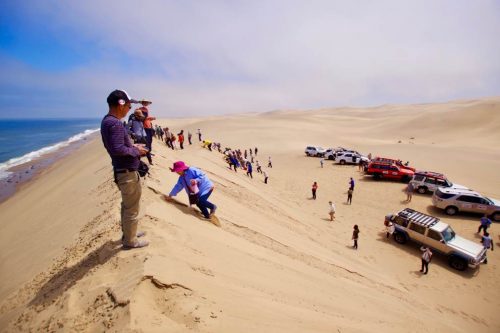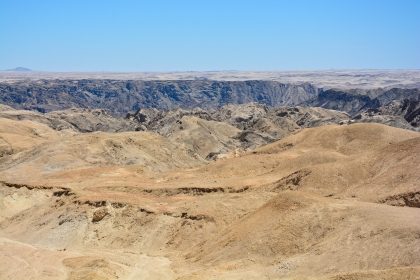Namib Desert, Walvis Bay
86th Voyage Report

On the African Continent, we call at Walvis Bay, Namibia. From the port, of course, we head to the Namib Desert, the world’s oldest desert. The word “Namib” means “nothing” in the language of the indigenous people who have long lived here. Indeed, the desert stretches out as far as the eye can see. The scenery is breathtaking.

The sand dunes are huge, and it’s hard to climb them without getting your feet caught in the sand. Of course, your shoes are covered in sand. But it’s so smooth that it doesn’t bother you. It’s a little tough, but we really want to climb up. One step at a time, we make our way to the top.

The reason we want to climb to the top of the dune is the spectacular view waiting for us. Do you see a few figures at the top of the dune in this photo? Sand dunes can be really this big. Incidentally, the Namib Desert was the location for filming the 2015 global hit movie “Mad Max”. You may recall the scenes of a dune buggy driving through, with the sun setting in the desert.

You can’t miss the unique flora and fauna of this extremely dry land with almost no rain. This plant is called the “Welwitschia”. The largest are said to be 2000 years old. This one, by the way, is about 500 years old – still young! The guide tells us that “if you go about 70 km from here, you’ll find something that’s 1500 years old.” What an amazing scale.

The last photo is from a place called “Moon Landscapes”. As the name suggests, here you will find a mysterious landscape reminiscent of the lunar world. It is sometimes referred to as “the most un-Earth-like place on Earth.” This is probably the reason that the first “Planet of the Apes” movie was filmed here. Our day in the Namib Desert is full of encounters with the unknowns of our planet Earth.
